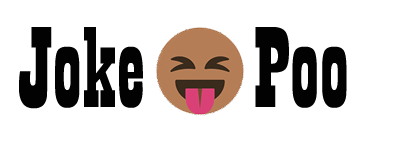They keep the words apart. If it weren't for the gaps, there's no way you could read it. It'd be like, one big word.
I didn't get the job.
Joke Poo: Can You Explain This Discrepancy?
“Can you explain this discrepancy on your expense report?” the auditor asked me, his brow furrowed.
“Well, without it, everything would match up perfectly. Then you wouldn’t have a discrepancy report. Think of it as creating job security.”
I’m pretty sure I’m being audited again next year.
Alright, let’s dissect this joke!
Key Elements of the Original Joke:
- Setup: The classic job interview question about gaps in a resume. This creates an expectation of a serious, employment-related explanation.
- Punchline: The interviewee’s absurdly literal interpretation of “gaps.” They are not addressing the expected time off from work, but the physical spaces between words.
- Humor Type: Slapstick/Absurdity. The humor comes from the unexpected and completely illogical answer. There’s also an element of deadpan delivery – the interviewee seems earnest in their ridiculous explanation.
- Underlying Theme: The joke plays on miscommunication and a clash between expected social norms (a job interview) and a nonsensical interpretation of language.
Comedic Enrichment & New Humor Creation:
Now, let’s leverage some interesting facts about word spacing and communication to craft something new.
Factual Tidbit:
- Kerning/Tracking in Typography: Kerning refers to adjusting the spacing between individual letters, while tracking refers to adjusting the spacing evenly across a range of characters. Bad kerning can make words look like entirely different (and often hilarious) words. (Example: “kern” can look like “Kem” if poorly kerned.)
New Joke/Observation:
Option 1: Leveraging Kerning Issues (New Joke):
Interviewer: “I’m seeing some…unusual spacing in your resume. This section on ‘Skills’ seems to say you’re an expert in ‘Anal ysis’.”
Me: “Yes! I have deep, probing experience. I can get to the bottom of anything!”
Interviewer: “It’s…kerning. The ‘y’ and ‘s’ are too close.”
Me: “Oh. So, I’m just good at analysis. Is that a problem?”
Option 2: An Amusing “Did You Know?” (Playing off the original’s absurdity):
Did you know? Without word spacing, written language wouldn’t just be unreadable; it’d be a typographical black hole! Consider ancient Greek: they used scriptio continua, writing without spaces. Reading it was less like understanding and more like decoding an ancient alien transmission. No wonder Socrates was so confused!
Option 3: (Short & Witty)
My resume gaps? That’s where my personality shines through… in the whitespace. Apparently, companies aren’t hiring whitespace right now.
Why these work:
- Option 1: Extends the miscommunication theme, using a common typographical issue for comedic effect. It acknowledges the original joke’s absurdity while creating a new layer of awkwardness.
- Option 2: Provides factual context that enhances the original joke’s core concept (the importance of spacing) with a historical, slightly exaggerated twist.
- Option 3: This option provides a short and witty response, similar to the nature of the joke it is based on.
The goal is to take the initial humor and either build upon it through new comedic situations or enrich the understanding of the joke through surprising or amusing facts. This strengthens the comedic impact and makes the original joke even more memorable.


